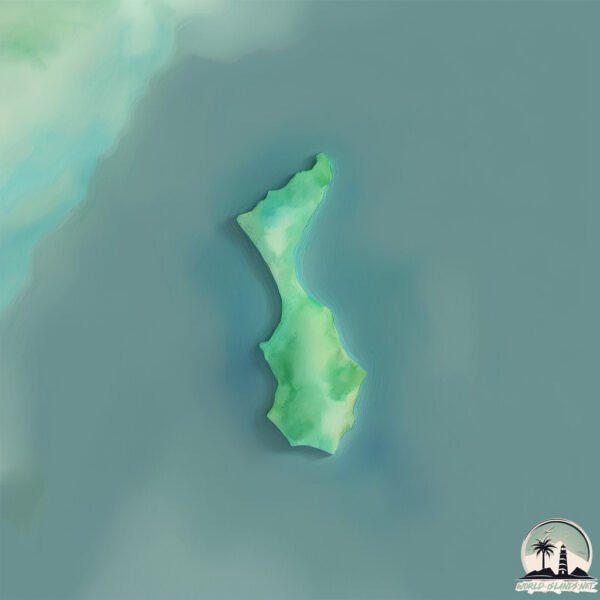Ningué Polo

Welcome to Ningué Polo, a Tropical island in the South Atlantic Ocean, part of the majestic Atlantic Ocean. This guide offers a comprehensive overview of what makes Ningué Polo unique – from its geography and climate to its population, infrastructure, and beyond. Dive into the details:
- Geography and Size: Explore the island’s size and location.
- Climate and Weather: Weather patterns and temperature.
- Topography and Nature: Uncover the natural wonders of the island.
- Infrastructure and Travelling: Insights on reaching, staying, and making the most of your visit.
- News and Headlines: Latest News.
Geography and size of Ningué Polo
Size: 0.667 km²
Coastline: 5.1 km
Ocean: Atlantic Ocean
Sea: South Atlantic Ocean
Continent: Africa
Ningué Polo is a Tiny Island spanning 0.667 km² with a coastline of 5.1 km.
Archipel: –
Tectonic Plate: Africa – One of the world’s largest tectonic plates, covering the African continent and parts of the surrounding oceans, known for its stability with some active rift zones.
The geographic heart of the island is pinpointed at these coordinates:
Latitude: -1.44579992 / Longitude: 9.25603131
Climate and weather of Ningué Polo
Climate Zone: Tropical
Climate Details: Tropical Savanna, Wet
Temperature: Hot
Climate Characteristics: Defined by distinct wet and dry seasons with high temperatures year-round. Pronounced rainfall occurs during the wet season, while the dry season is marked by drought.
Topography and nature of Ningué Polo
Timezone: UTC+01:00
Timezone places: Europe/Paris
Max. Elevation: 5 m
Mean Elevation: 5 m
Vegetation: Evergreen Broadleaf Forest
Tree Coverage: 63%
The mean elevation is 5 m. The highest elevation on the island reaches approximately 5 meters above sea level. The island is characterized by Plains: Flat, low-lying lands characterized by a maximum elevation of up to 200 meters. On islands, plains are typically coastal lowlands or central flat areas.
Dominating Vegetation: Evergreen Broadleaf Forest
Characterized by dense, lush canopies of broadleaf trees that retain their leaves year-round. These forests are typically found in tropical and subtropical regions and are known for their high biodiversity. Ningué Polo has a tree cover of 63 %.
Vegetation: 2 vegetation zones – Low Diversity Island
Islands with two distinct vegetation zones offer slightly more ecological variety. These zones could be due to differences in elevation, moisture, or other environmental factors. While still limited in biodiversity, these islands may offer a contrast between the two zones, such as a coastline with mangroves and an inland area with grassland.
Infrastructure and Travelling to Ningué Polo
Does the island have a public airport? no.
There is no public and scheduled airport on Ningué Polo. The nearest airport is Port Gentil Airport, located 98 km away.
Does the island have a major port? no.
There are no major ports on Ningué Polo. The closest major port is OGUENDJO TERMINAL, approximately 37 km away.
The mean population of Ningué Polo is 1 per km². Ningué Polo is Gently Populated. The island belongs to Gabon.
Continuing your journey, Île Heddé is the next notable island, situated merely km away.
Gabon is classified as Developing region: Regions characterized by lower income levels, with economies in the process of industrialization and modernization. The level of income is Upper middle income.
News – Latest Updates and Headlines from Ningué Polo
Stay informed with the most recent news and important headlines from Ningué Polo. Here’s a roundup of the latest developments.
Please note: The data used here has been primarily extracted from satellite readings. Deviations from exact values may occur, particularly regarding the height of elevations and population density. Land area and coastline measurements refer to average values at mean high tide.
